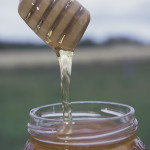 Wounds or injuries in persons with diabetes or chronically high blood sugar levels can be very dangerous. Particularly in diabetics whose blood sugars are high, the body loses many important nutrients that is normally uses in the fight against infections.
Wounds or injuries in persons with diabetes or chronically high blood sugar levels can be very dangerous. Particularly in diabetics whose blood sugars are high, the body loses many important nutrients that is normally uses in the fight against infections.
Some of these nutrients include the mineral zinc and vitamin C. The high blood sugar levels often lead over time to impaired wound healing and nerve damage, making a diabetic less likely to even realize they even have an injured or infected toe or a foot until it is late in the damage — because the nerves that carry pain signals back to the brain no longer work properly.
So, it is extremely important to have your doctor look at any significant injury or wound if you are diabetic (or even if you are not). Do good first aid, regardless – apply pressure to stop bleeding, wash the wound with running water if possible to knock out as many bacteria as possible too. Avoid using a tourniquet, which will reduce blood flow to the body part. Hydogen peroxide may help wash out dirt from a deep wound, but it may also damage surrounding skin – so be careful.
You can often talk with a nurse at your health insurance company or an urgent care about immediate steps to take that are best for your particular situation.
Don’t try to self treat any injury that is more than a minor cut or burn. Deep wounds also need professional evaluation and treatment, as well as a tetanus shot or booster to avoid a very serious infection that can occur.
For minor wounds and cuts, you can find external healing salves and ointments such as Calendula gel or Comfrey salves (Never take Comfrey internally – it can be toxic). Other external home remedies for minor cuts include garlic juice, rosemary, and goldenseal applied to the injured area. Any gaping wound needs medical attention, not home remedies.
Nonetheless, there are some other home remedies or natural remedies for healing wounds that may help the healing process. First, make sure that you take a good supplement of zinc and of vitamin C – you may even be able to get some lozenges usually used for colds to get the amounts you need internally. Don’t overdo the zinc – it needs to be in balance with copper, but both are needed for cells to heal well. Make sure your diet includes good quality protein. Not only is protein good to help control blood sugar in pre diabetes and diabetes, it also is essential to help the inflammatory and immune response processes to occur properly and assist new tissue to grow and fill in the wound.
Next, scientists have been finding that while some honey may have bacterial contamination, honey applied outside the body to a wound naturally has antibiotic properties. Honeys differ in which ones work better, but overall, when it is OK to block dirt and air from the wound, honey can do so and kill bacteria that try to grow in the injured area. In addition, honey may have some antiinflammatory properties, along with some ability to reduce pain. Obviously, if you are allergic to honey or to bees, this is not a strategy for you.
Apple cider vinegar is another home remedy to promote natural wound healing. The vinegar may have some ability to blocking itching as the wound begins to heal. It may not be the first thing to put on a wound right after an injury, but it may help later in the course of healing when the itching becomes more difficult to deal with.
Other natural substances with antibiotic properties include colloidal silver in a spray externally, or diluted tea tree oil (which has antibiotic and antifungal properties). External vitamin E creams sometimes can help reduce scarring when the wound is finishing up its healing. Again, make sure that your doctor monitors what you are doing so that everything you do works together and helps the wound healing along, even if you are pre diabetic or diabetic with elevated blood sugar levels.
